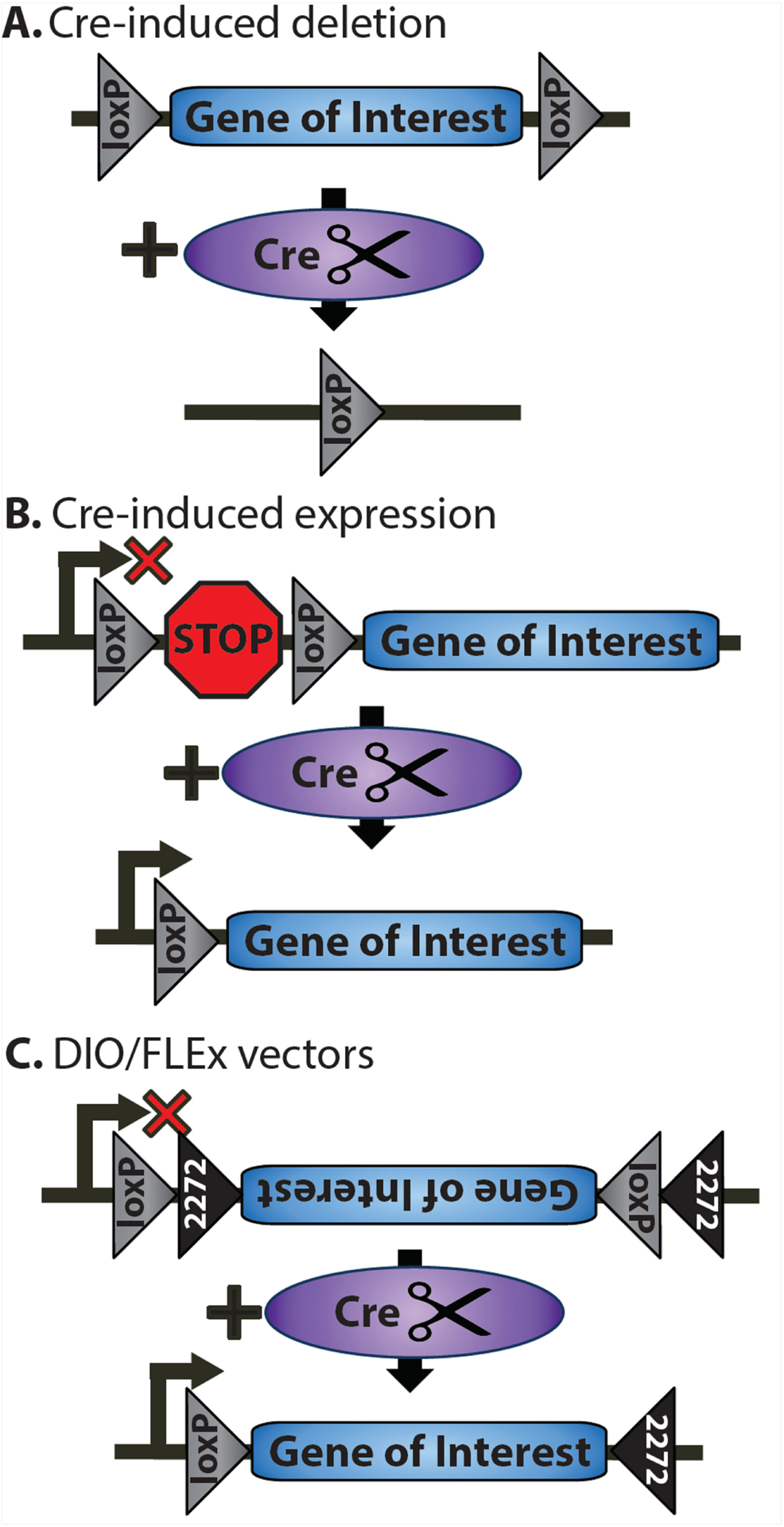Figure 1. Cre-loxP system.

Cre-induced recombination can be used to induce either deletion or expression of a target gene. (A) Schematic depicting Cre-induced deletion. Cre cuts at LoxP sites flanking the gene of interest, removing the gene in any region expressing Cre. (B) Schematic depicting a typical Cre-induced expression system. LoxP sites flank a stop sequence that prevents expression of the gene. Exposure to Cre excises the stop sequence, allowing the target gene to be expressed. (C) Schematic of the DIO (Double Inverted Orientation) system (also called the Flip-Excision (FLEx) system). The vector expresses the gene of interest in an antisense orientation flanked by two unique lox sites (loxP and lox2272). The addition of Cre catalyzes recombination of these two sites that permantly flips the gene into the sense orientation, allowing for expression.
